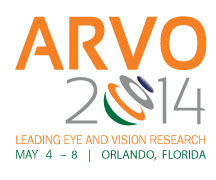Si riferisce di un’intervista al professor Gandolfi di Parma a Medscape News, in cui si parla del lavoro da lui presentato al prestigioso ARVO del 2014 su una tecnica originale per effettuare SLT nei pazienti glaucomatosi.
È abbastanza raro che degli studiosi italiani portino avanti delle ricerche sull’SLT, che per misteriosi motivi è molto poco diffuso e apprezzato nel nostro paese, mentre è di utilizzo routinario in Europa e negli Stati Uniti. È particolarmente interessante la tecnica da lui descritta e comprovata, alla quale eravamo personalmente già approdati nella nostra pratica clinica.
Sfruttando la delicatezza di azione dell’SLT, gli autori hanno effettuato dei trattamenti a dei dosaggi ancora più bassi di quelli “ordinari”, già sotto soglia, preferendo ripetere più frequentemente la procedura. A distanza di tempo tale metodica si è rivelata ancora più efficace di quella standard.
L’SLT si conferma una valida arma nel terapia del glaucoma, ed ha il suo punto di forza proprio nella delicatezza e selettività con cui agisce sui tessuti oculari.
Low-Power Annual SLT Effective for Ocular Hypertension
Dr. Stefano Gandolfi
Association for Research in Vision and Ophthalmology (ARVO) 2014 Annual Meeting
Abstract 818. Presented May 5, 2014.
For patients with ocular hypertension, yearly treatments with low-power selective laser trabeculoplasty (SLT) are more effective than standard SLT or the commonly used argon laser trabeculoplasty (ALT), according to new research.
With the yearly treatment, “patients remain free of medications for a longer period of time,” said lead investigator Stefano Gandolfi, MD, professor of ophthalmology at the University of Parma in Italy.
He presented the findings here at the Association for Research in Vision and Ophthalmology 2014 Annual Meeting.
Dr. Gandolfi and his colleagues conducted a retrospective chart review of patients with ocular hypertension in at least 1 eye or open-angle glaucoma.
Patients were treated with 1 of 3 therapies: 46 underwent annual treatments of 360-degree, low-power SLT (0.4 mJ, 50 to 60 spots); 37 underwent standard 360-degree SLT (70 to 80 spots) with a stepwise increase in power until obtaining an “air-bubble” to decrease 1 step eventually, repeated as needed; and 39 underwent 1 treatment of 360-degree ALT (50u spot, 0.5 to 0.8 W, 70 to 90 spots).
Mean follow-up in the cohort ranged from 5.6 years to 7.4 years.
Significantly more patients in the low-power SLT group than in the standard SLT and ALT groups did not need glaucoma medication (85% vs 47% vs 38%; P < .01). In addition, mean time to the initiation of medical therapy was significantly longer in the low-power SLT group than in the standard SLT and ALT groups (6.2 vs 3.3 vs 3.5 years; P < .05). There were no serious adverse events documented in the medical records of treated patients. Although the effectiveness of standard SLT and ALT has been demonstrated, "as far as I know, this approach has never been adopted," Dr. Gandolfi told Medscape Medical News.
“The idea came after conversations I had, several years ago, with one of the developers of this technique [Jorge Alvarado, MD, from the UCSF School of Medicine in San Francisco]. He stressed the possible ‘biological’ mechanism of action of SLT, and we developed the idea of repriming the tissue periodically,” Dr. Gandolfi explained.
“This approach could deliver to the target cells the energy needed to maintain a level of efficiency in ‘cleaning’ the meshwork,” he said.
“SLT laser was developed with the expectation that it would be ‘gentler’ on the target tissue. I don’t believe we know the best way to be at the optimal point on the dose-response curve,” he told Medscape Medical News.
“Repeated lower-level treatment might prevent some collateral tissue damage and be quite effective,” Dr. Fechtner said. “The level used in this study (0.4 mJ) is not dramatically lower than the level that can create the ‘champagne bubbles’ considered by some to be the correct level for treatment.”
Nevertheless, the findings support the pursuit of additional research to better determine the potential benefits, he said.
“The approach that was reported is innovative and worthy of prospective study,” he pointed out. “Repeated low-energy laser, if effective, would eliminate some of the burden of medical therapy.”
Dr. Gandolfi and Dr. Fechtner have disclosed no relevant financial relationships.

